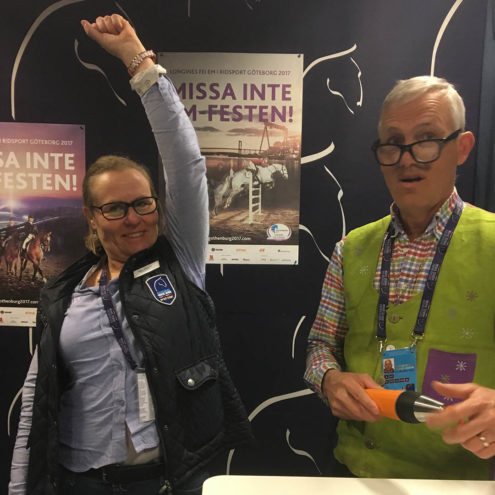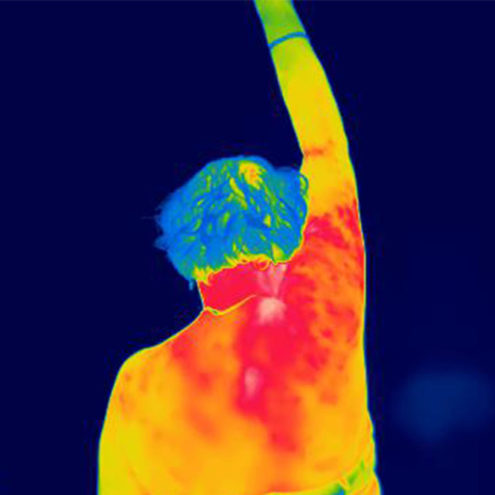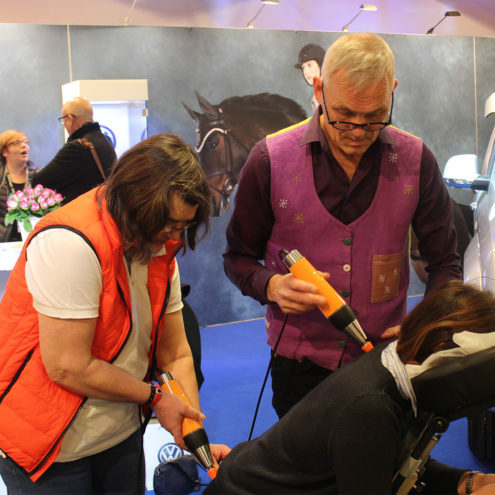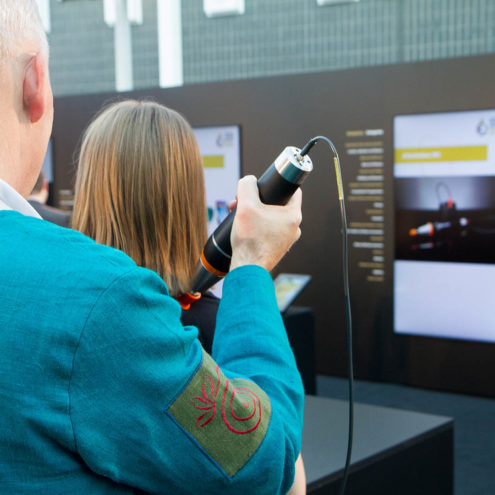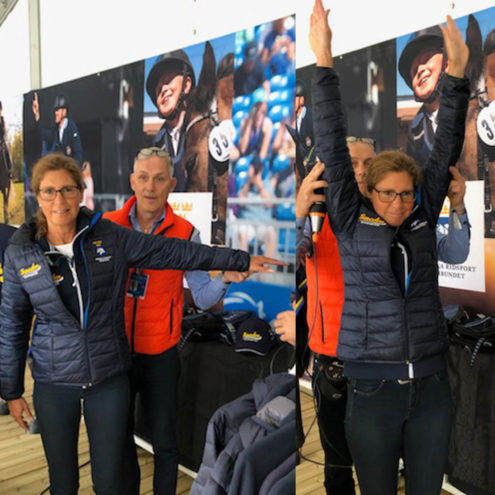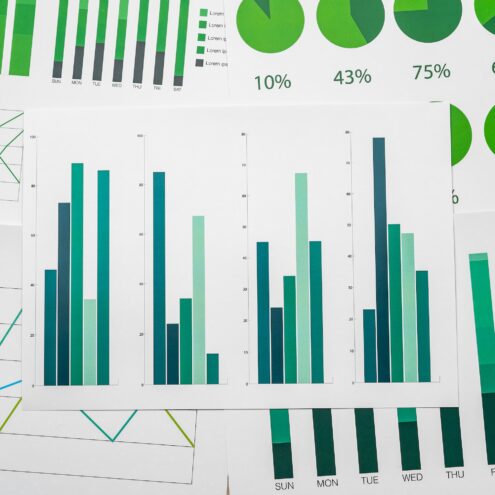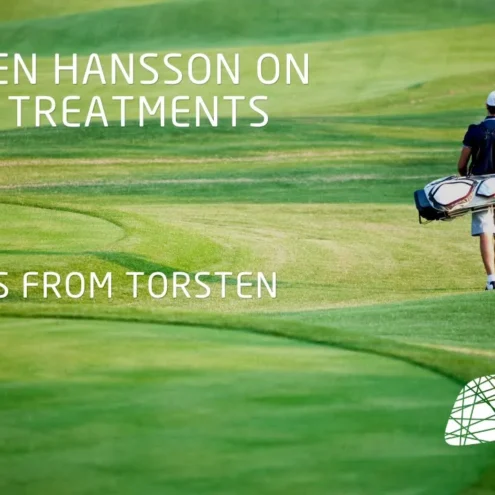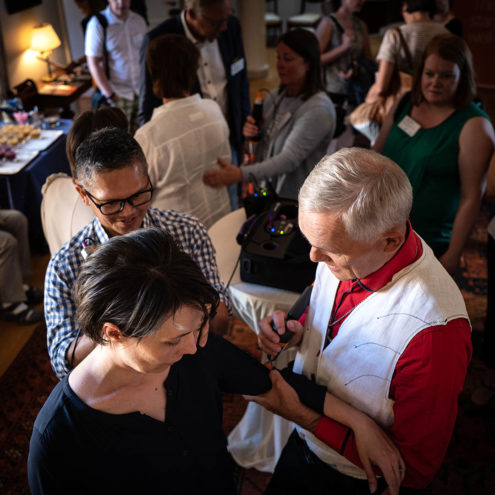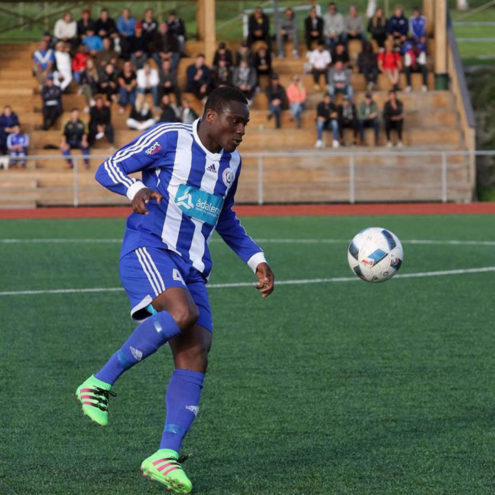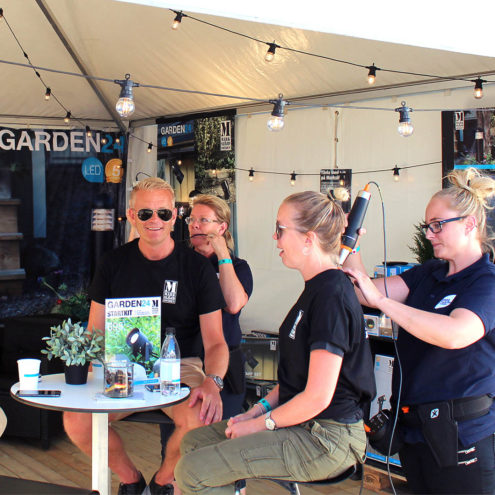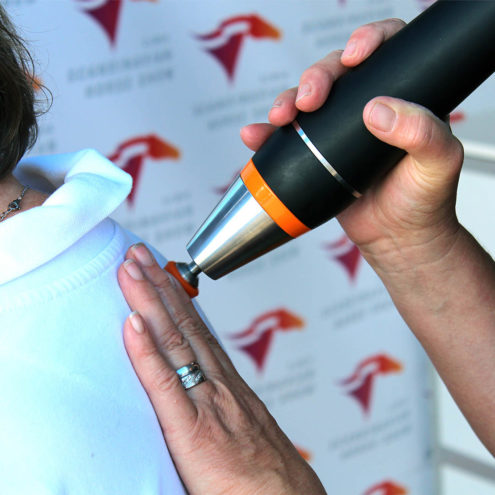Heel spur
Heel spur is a calcification under the heel of the plantar fascia, which is the strong fascia that runs from the heel bone to the toes. It is this fascia that provides support and shock absorption to the foot and distributes the pressure to other parts of the body to reduce the load in one place. Most commonly, you do not have heel spurs but instead Plantar Fasciitis. However, Plantar Fasciitis can lead to heel spurs.
What causes heel spurs?
What is called a heel spur is usually not a true developed heel spur but starts with an inflammation of the plantar fascia tendon attachment to the underside of the heel bone, plantar fasciitis. Constant, daily repetitive overuse of the tendon causes small micro-injuries that the body tries to heal. This causes pain in the area and pain in the heel when you put weight on it but is usually not yet a real heel spur. If you ignore the pain and continue to put weight on the foot in the same way, a heel spur will develop over time. It develops to adapt the tissue to the heavy load in an attempt to strengthen the structures around the heel bone attachment. It does this by building up more bone tissue. A small ossification will then form, which will be like a small bony bump on the heel bone.
Causes of heel spurs
The foot is amazingly designed to take the shocks and pressures we put on it when we walk, stand and run, but if we put pressure on the foot at an angle or overload it, it can cause an overstrain in the fascia just in front of the heel bone, where the fascia attaches. This overstretching has been named plantar fasciitis and consists of small tears in the fascia after rapid and severe overstretching or prolonged strain on, for example, hard surfaces in the wrong shoes. If you do not take care of the plantar fasciitis and make it heal, but continue to overwork the fascia, it can give rise to a calcification at the fascia attachment, which on X-ray looks like a small thorn and which is then called heel spur. However, this is quite unusual and plantar fasciitis is often confused with true heel spurs. True heel spurs occur after a longer period of time and then it has become a thorn that has grown from the heel bone under the fat pad that is located in the middle of the heel.
Symptoms of heel spurs
To distinguish between plantar fasciitis and heel spurs, symptoms of both are listed:
If you have one or more of the following symptoms, you may have plantar fasciitis:
Pain below or just in front of the heel bone
Pain is worst at first strain after rest and then subsides
Pain with prolonged strain such as prolonged standing
Varying degree of pain and symptoms from day to day
The pain is in front of the heel bone, under the heel bone or at the side of the heel bone
If you also have additional symptoms as listed below, you have probably also developed heel spurs:
Increased pain under or just in front of the heel bone after a prolonged period with symptoms from the list above.
Trampled heel pad
Why have I got a heel spur?
It has probably started because you have overloaded your plantar fascia, the strong fascia that runs under the foot from the heel to the toes. If you have asymmetries in your body that cause you to put an incorrect load on your feet, this can lead to this incorrect load. The overload can also occur if, for example, you jump down from a height and land hard so that the plantar fascia is stretched too quickly and too strongly so that there are small tears in the fascia, ie the collagen fibers in the fascia break.
It may also be that you have changed from shoes with soft supportive soles to flatter soles, making the tendon work much harder than it is used to. If you stand for a long time on hard surfaces, this fascia can also become overstretched and you will then get plantar fasciitis. If you do not rest your foot and relieve the fascia and let it heal, the load will increase and the body will respond by trying to strengthen the area to cope with the load and you get a heel spur. This process takes quite a long time, up to several months.
When should I seek treatment for heel spurs?
Both plantar fasciitis and heel spurs are painful and limit your daily life but are by no means dangerous. In the first situation, you should completely rest your foot from strain and perhaps even use a shoe with a softer sole to relieve the strain.
Fascia treatment helps the body to improve posture, increase circulation and promote healing of the plantar fascia, as well as getting the body in balance and evenly loaded to avoid new overexertion in the future. If you follow the advice above, it usually heals on its own.
Treatment Heel spurs
Fascia treatment helps the body remove and relieve pressure and increases mobility, circulation and flow so the body has the best chance of healing and improves posture and balance so plantar fasciitis and heel spurs don’t come back. It is also important to train the foot so it is ready to handle the load you want it to handle.
How is heel spur treatment done?
A fascia clinic starts with an analysis of posture and body balance. The fascia therapist has a holistic view of the body that is often lacking in traditional care. Treatment is carried out using manual osteopathic techniques and a vibrating machine that relaxes the tissue.
Heel spurs when pregnant
During pregnancy, the stress on joints and feet increases. It is therefore particularly important to ensure that the body is kept straight and in balance so as not to overload certain joints. It is very important from several aspects, to keep and correct the pelvis. An oblique, rotated pelvis affects not only the mother’s body load and balance, but also the growing fetus and the birth itself.
Plantar Fasciitis and Heel spurs – What can I do myself?
Train your feet! We constantly put stress on our feet but rarely do we train them for the task. Your fascia therapist can help you with appropriate exercises to strengthen your feet without overloading them.
Heel spur exercises
In case of heel spurs, it is important to keep the circulation going in the foot. Therefore, it can be helpful to do some exercises a couple of times a day to support the body’s healing.
Bend and stretch toes. Do 20 to 30 repetitions. Do this at least twice. Repeat the exercise at least three times a day.
Toe-spread. Spread outwards with your toes and come back. Repeat 20-30 times twice. Do the exercise at least three times a day.
Foot angling. Angle your feet out to the right and left. Angle 20-30 times in each direction twice. Do the exercise three times a day.
Bend your foot up and down. Do 20-30 repetitions each way. Repeat twice. Do at least 3 times a day.
Stretch the plantar fascia. Grasp the toes of the sore foot and bend your toes up to stretch the plantar fascia. Hold the stretch for one minute. Repeat three times. Do this exercise several times a day.
Stretch the outer calf muscle. Stand up and take a step backwards. The heel of your back foot should be pressed against the ground. Keep the knee of the back leg straight. If you don’t feel any pull in the Achilles tendon, try taking a longer step back. Hold the stretch for at least one minute and breathe deeply during the stretch. Stretch several times a day.
Stretch the inner calf muscle. Stand up and take a step backwards, pressing your heel against the floor. Now take and bend the knee of the back leg until you feel a pull on the Achilles tendon. Hold the stretch for at least a minute, breathing deeply as you go. Stretch several times a day.
Heel spur FAQs
What is heel spur?
A heel spur is an overload on the tendon/fascia under the arch of the foot that attaches to the heel bone. To strengthen the tissue and cope with the increased load, the body builds up more bone tissue and a small ‘spur’ forms.
How do you cure heel spurs?
Seek help from a Fascia Clinic as soon as you start to feel pain under your heel when you get up in the morning. Prevent by getting regular check-ups and body balancing.
How do you treat heel spurs?
By releasing tension in the calf and up towards the pelvis. Correct so that the pelvis is in balance, straight.
Where is the heel spur located?
In the calf muscles, knees and pelvis.
Where does it hurt when you have a heel spur?
Under the front part of the heel, you usually have a lot of pain when strained.
 Search
Search

